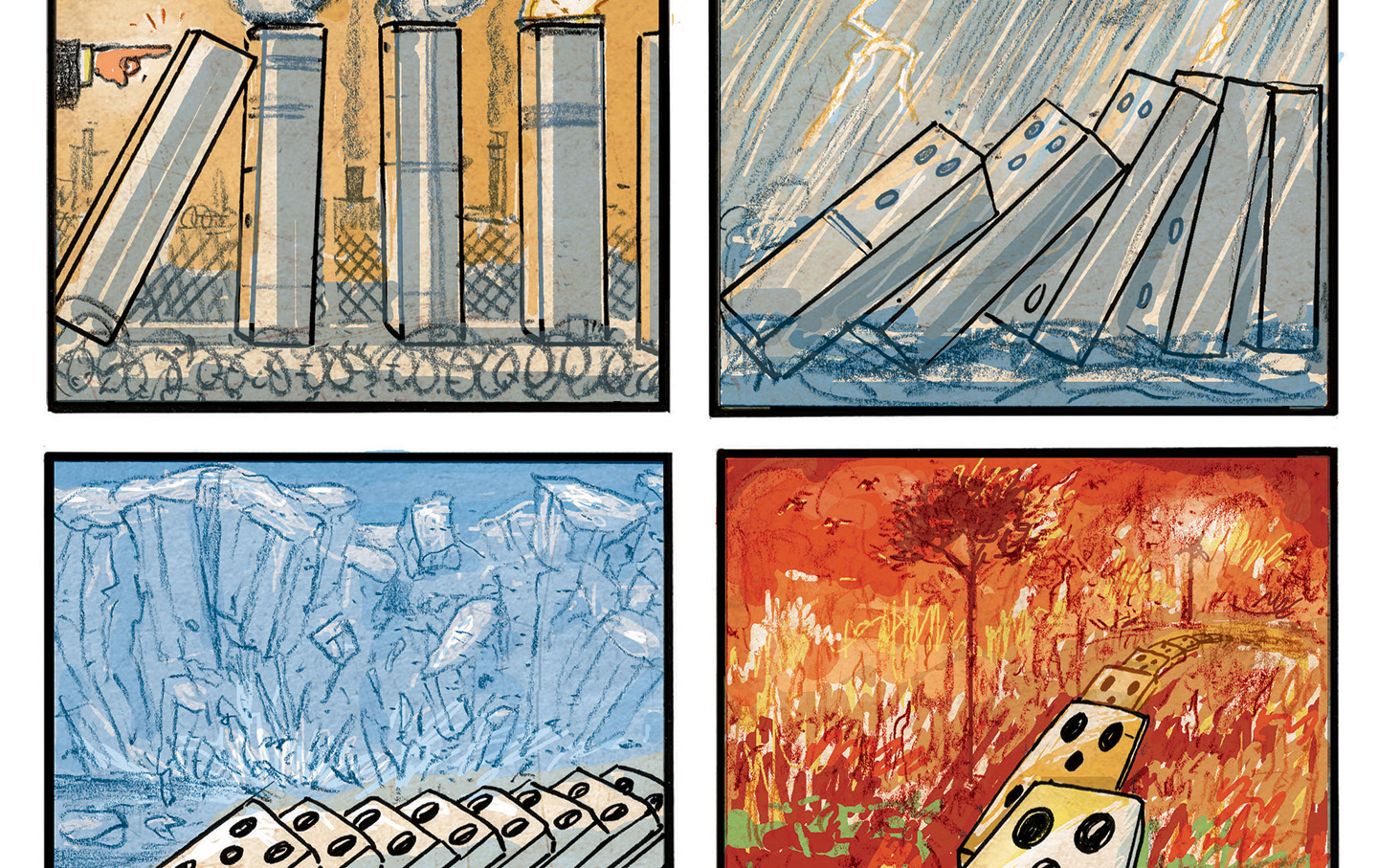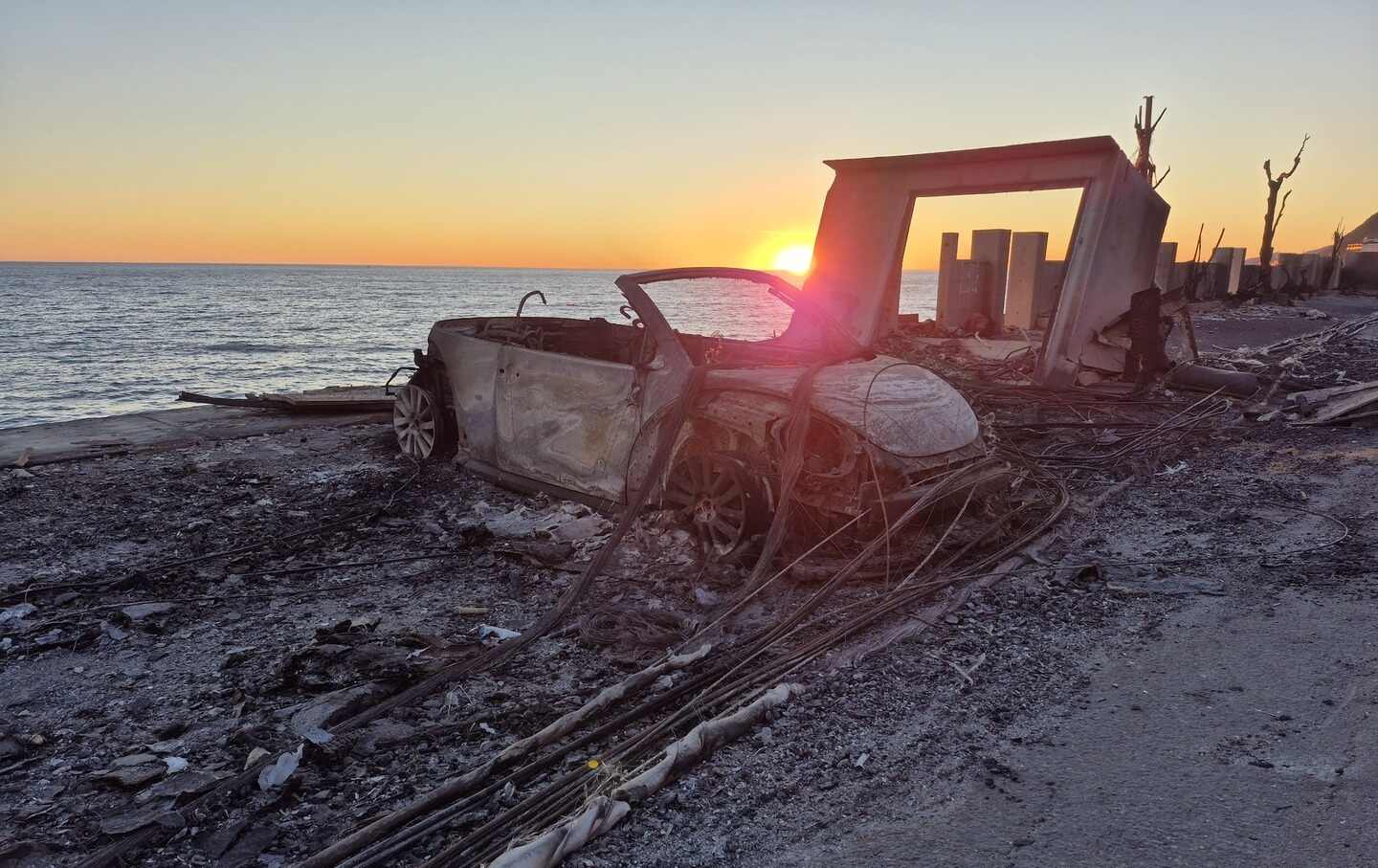
New York’s Build Public Renewables Act will reduce carbon in the atmosphere, combat inequality, and help workers. It might also defeat Trumpism.
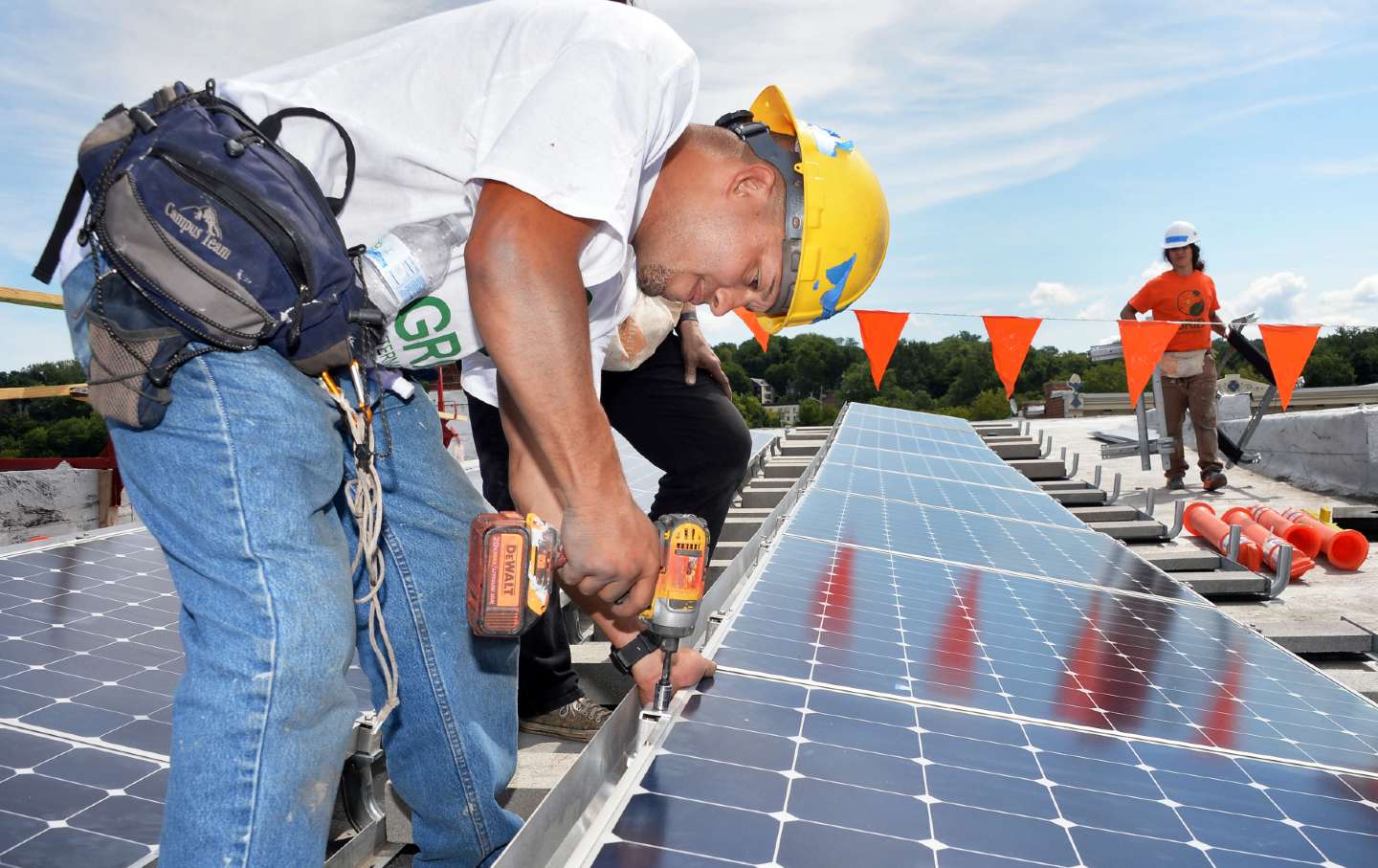
Shane Velez of the Bronx installs a solar electric system panel in Tory, New York, on August 7, 2015.
(John Carl D’Annibale / Albany Times Union via Getty Images)
The organizers behind New York’s Build Public Renewables Act (BPRA) make a striking claim: Solar panels can help defeat fascism. They argue that union-made renewables and credits to low-income energy users can slow the rise of the far right and that, if implemented seriously, the BPRA in New York State can prove this to the nation. Passed in May 2023, the BPRA has been dubbed New York’s “Green New Deal,” because it combines bold climate action with economic populism.
The law has four main features. First, it seeks to bring New York into compliance with the state’s legal requirement to achieve 70 percent renewable energy by 2030 and 100 percent by 2040. The mechanism for doing so is to mandate that the New York Power Authority (NYPA), the largest state public power authority in the country, fill the gap in renewable energy creation left by private-sector developers. Second, the law will lower energy bills for New York’s neediest, by providing credits to low- and moderate-income New Yorkers. Third, it seeks to create 25,000 green union jobs, providing $25 million a year to help fossil-fuel workers transition to clean energy, and building pathways for marginalized communities to enter this sector, with funding allocated for job training, childcare, and transportation costs. And finally, it requires that NYPA close 11 highly polluting small natural-gas power plants, known as “peaker plants,” located in predominantly Black and brown communities in New York City and Long Island, by 2030, provided that the plants’ output can be replaced with renewable energy.
In short, the Build Public Renewables Act does what progressives have been clamoring for the Democratic Party to do even before its devastating loss to Donald Trump: enact policies that achieve progressive goals, such as decarbonization and combating racial and socioeconomic inequality, in a way that makes life better for workers and the middle class.
To its supporters, such as New York State Assemblyperson and Democratic Socialists of America–endorsed New York City mayoral candidate Zohran Mamdani, the BPRA offers the perfect vehicle for defeating Trump. Speaking at a November 20 rally in midtown Manhattan, Mamdani spelled out this argument: “If you want to know how we can defeat the Donald Trump far-right movement, it’s by showing that we actually have a workable alternative. Because if working-class people can’t breathe the air, if they can’t afford to live in the city they call home because they can’t find a union job, and if they look around at their favorite parks being on fire, why would they trust us? It is time to show them why. It is time for New York to lead the way. It is time for the Build Public Renewables Act.”
There is, however, a problem: In October, the New York Power Authority released a draft of its strategic plan for implementing BPRA that advocates say falls woefully short of what is needed for the law to succeed. The main criticism is that the draft plan proposes building just 3.5 gigawatts of renewable energy, less than a quarter of the 15 gigawatts organizers say is needed to meet New York’s target of 70 percent renewable energy by 2030.
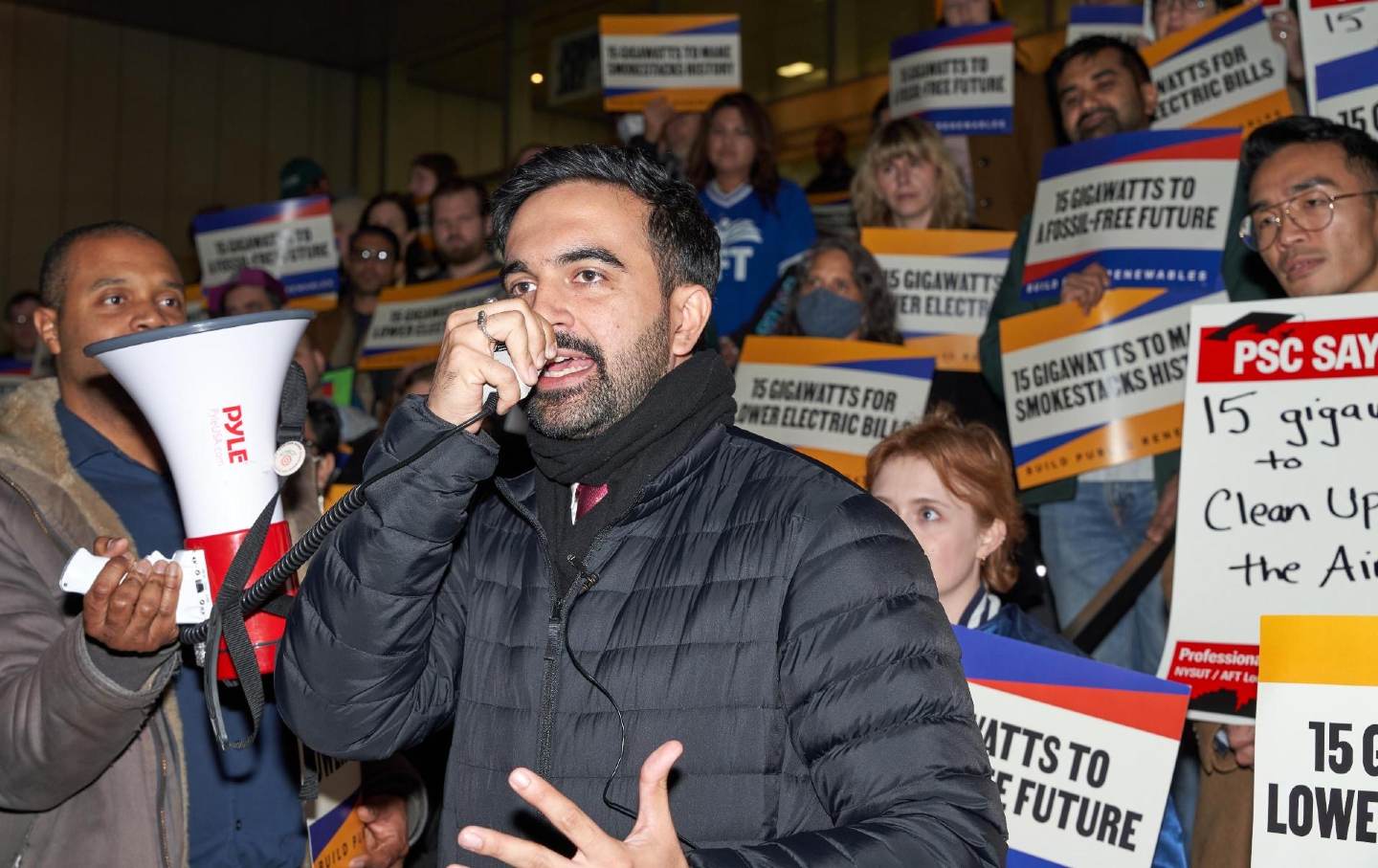
When I asked Mamdani to comment on the good and the bad in NYPA’s draft plan, he responded: “I can’t really in good conscience spend too much time speaking about what the plan does well, because I’m quite consumed, to be honest, with the shortcomings of it. To propose only three and a half gigawatts of renewables when a bare minimum is 15 is indicative of a plan that not only lacks ambition but lacks any sense of reality with regards to what New Yorkers are facing right now and what we will face if Albany’s response continues to be one of non-response, frankly.”
New York Power Authority officials’ public comments on this issue are unlikely to assuage its critics. During a public hearing on its draft plan held at John Jay College on November 20, Vennela Yadhati, NYPA’s vice president of renewable project development, commented, “I know there’ve been a lot of questions about the size of this first tranche of projects. Just to put it in perspective, financing 15 gigawatts of energy would be roughly $30 billion, the same as paying for four new LaGuardia airports all at once. That’s a lot of capital.”
Justin Driscoll, NYPA’s president and chief executive officer, was similarly noncommittal when, in a recent interview with The New York Times, he “called the 15 gigawatt target a ‘tall task’” and said, “I guess I would say that we are going to do as much as we can to fill as much of the gap as we can.”
Key organizations within the coalition of labor, environmental, community, and progressive groups that forced New York’s initially reluctant legislature and governor to pass BPRA view Driscoll with suspicion. Driscoll, after all, is a Republican who opposed the BPRA in 2022.(The coalition that has supported BPRA’s passage and implementation includes Public Power New York, Democratic Socialists of America (of which I’m a member), the state’s AFL-CIO, the Building Trades Council, the International Brotherhood of Electrical Workers, the American Lung Association, New York State United Teachers, 1199SEIU, CUNY’s Professional Staff Congress, United University Professions, United Auto Workers 9A, and grassroots organizations like South Bronx Unite.)
In 2023, following a campaign against him by Public Power NY and DSA, the State Senate rejected Driscoll’s confirmation as head of NYPA, but Governor Kathy Hochul used a loophole in state law to make his interim post permanent and therefore task him with implementing the BPRA.
NYPA did not respond to my request to comment for this article, but its draft plan points to what the Power Authority sees as the major obstacle to building 15 gigawatts of public renewables: its AA bond rating. NYPA is strongly committed to maintaining this rating, and appears to fear that financing more renewable energy would put it in jeopardy. New Yorkers at the November 20 public hearing at John Jay College repeatedly challenged this argument. Charlie Heller, a DSA Ecosocialist working-group member, stated, “Experts have shown that NYPA can finance this kind of buildout and keep a standard public utility-level bond rating.”
Heller then asked the audience of roughly 200, “Why don’t you raise your hand if you’d rather NYPA give up on the climate and keep its bond rating?” No hands went up. When Heller asked, “OK, raise your hand if you’d rather that NYPA had a slightly lower but still top-level bond rating and lead the way to protect our climate?.” there was a sea of hands and many cheers.
Popular
“swipe left below to view more authors”Swipe →
NYPA’s concern about its bond rating cannot be dismissed outright. A 2023 report commissioned by Public Power NY found that if NYPA pursued a more ambitious plan to build public renewables, its bond rating could suffer a minor downgrade, which might result in increased borrowing costs. The report’s authors still recommended this course of action, noting that this scenario (based on a modest decline in NYPA’s debt service coverage and highly conservative estimates of NYPA’s revenues) “still results in a financial profile comparable to many public power entities.” When I raised this issue with organizers pushing NYPA to be more aggressive, they pointed to the need to consider not only the possible risk to NYPA’s credit rating but also the risks of doing too little to combat the climate crisis.
Critiques of NYPA’s plan are not limited to the issue of 15 gigawatts. Nancy Romer, a retired Brooklyn College professor and leader of CUNY’s Professional Staff Congress union who organized 10 “decarbonize CUNY” town halls this fall, pointed to attrition, a pernicious problem that bedeviled the 2019 Climate Leadership and Community Protection Act. “Seventy percent of the private contracts were reneged upon,” she told me, resulting in the cancellation of renewable energy projects under contract. Romer mentioned several reasons this occurred, including “supply chain problems” and “the increase in the interest rates for borrowing money.”
Romer and others feel NYPA is not taking the threat of project attrition seriously. “You know what usually happens is that they say, ‘This is what we’re going to accomplish in two years,’ and then they backtrack from it, because it’s harder to pull off than they think.”
Another criticism is the siting of projects in NYPA’s plan, with only one of the 40 proposed projects slated for New York City, and just a handful for Long Island and the Hudson Valley. While acknowledging the higher cost of land in New York City and downstate, critics feel it is shortsighted to build so little renewable energy in the places where demand is greatest. As Gustavo Gordillo, a union electrician and cochair of New York City–DSA, told me, this is also a labor and electoral issue. “The first thing I noticed when I saw the map that accompanies the strategic plan is that there’s only one job proposed in New York City. I’m a union electrician in New York City, and I want to work these jobs. I want to build and wire publicly owned energy.”
Gordillo is thrilled that the BPRA includes gold-standard labor and prevailing wage provisions, written by the state’s AFL-CIO, but he said that the draft plan is “a huge missed opportunity.”
He added, “It’s an own-goal by the governor to not use this this law to build a base to show New Yorkers that the government can work for them, particularly when the failure to do that by the Biden administration has led to Trump becoming president.”
During her prepared remarks at the November 20 John Jay hearing (one of six hearings held across the state), NYPA’s Vennela Yadhati referenced the environmental-justice aspects of the draft plan. One important feature of the BPRAis the Renewable Energy Access and Community Help (REACH) program, which will redirect funds generated by NYPA-owned renewable energy projects toward low- and moderate-income New Yorkers in the form of energy credits. BPRA advocates are demanding credits of at least 50 percent of energy bills, though the draft plan fails to provide any details on this issue.
The draft also references the goal of closing the 11 “peaker plants” in New York City and Long Island, but is light on particulars. The report notes that a “phase out plan” on closing the plants will be published by May 3, 2025. For Dalourney Nemorin, a member of South Bronx Unite, this is a critical feature of the BPRA. “The peaker plants located in the South Bronx, based on studies, have the highest damaging contributions to environmental and health” harms. A September 2021 study by New York City’s Health Department showed an asthma rate amongst children in two South Bronx neighborhoods located near peaker plants that was an astounding 20 times higher than in areas not located next to peaker plants, such as Bayside–Little Neck, Queens. Nemorin said Bronx residents who sent letters to the governor demanding a stronger strategic plan repeatedly mentioned asthma as a top concern. “So many people in the Bronx have asthma.”
Instead of being demoralized by the shortcomings of NYPA’s draft, the progressive legislators and organizers behind the BPRA are determined to win a plan that fulfills the full potential of the law. I asked Sarahana Shrestha, a DSA-endorsed state assemblyperson from the Hudson Valley, why the BPRA is important. She responded: “There is a problem in the way our system is run. First of all, why is energy even for profit?… Ultimately the private market was not designed to deliver a public good, and we are reckoning with the outcome of that and pivoting to being as ambitious and aggressive as possible to correct course so that we can have a just energy transition.” NYPA will issue its final strategic plan by January 31, 2025, and the public can submit online comments on the plan through December 9 by e-mailing [email protected]. Whether and how NYPA alters the plan in response to the mass pressure campaign it is facing will determine if the Build Public Renewables Act can deliver its promises of slowing or reversing the climate crisis as well as the rise of fascism.
More from The Nation
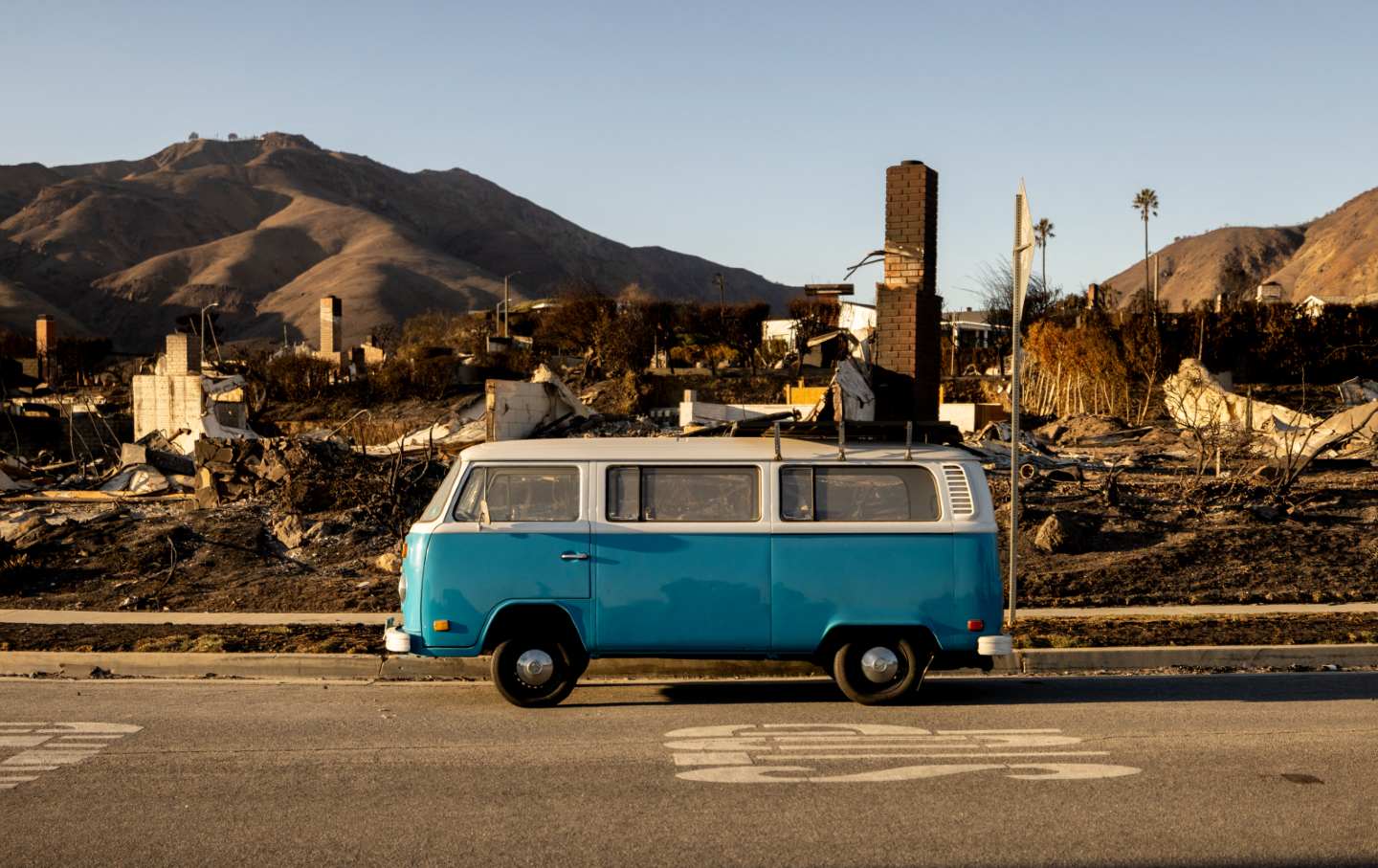
The media is failing to warn us about the scale of the disasters that lie ahead. In Los Angeles, as everywhere, we need more than liberal technocratic tweaks.
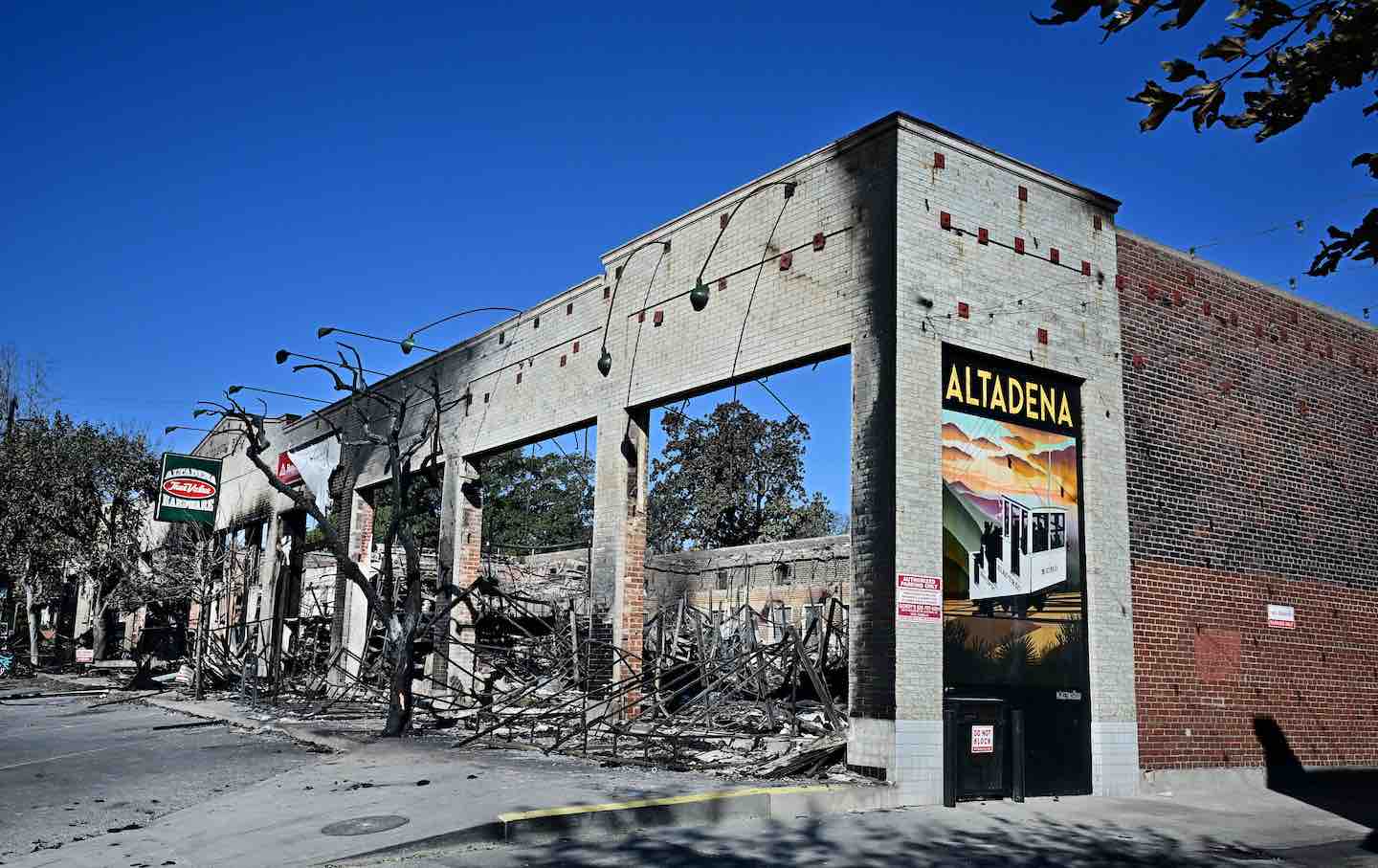
California’s Department of Insurance has worked to repair the broken insurance system, but the LA fires threaten to undo the progress the state has made.
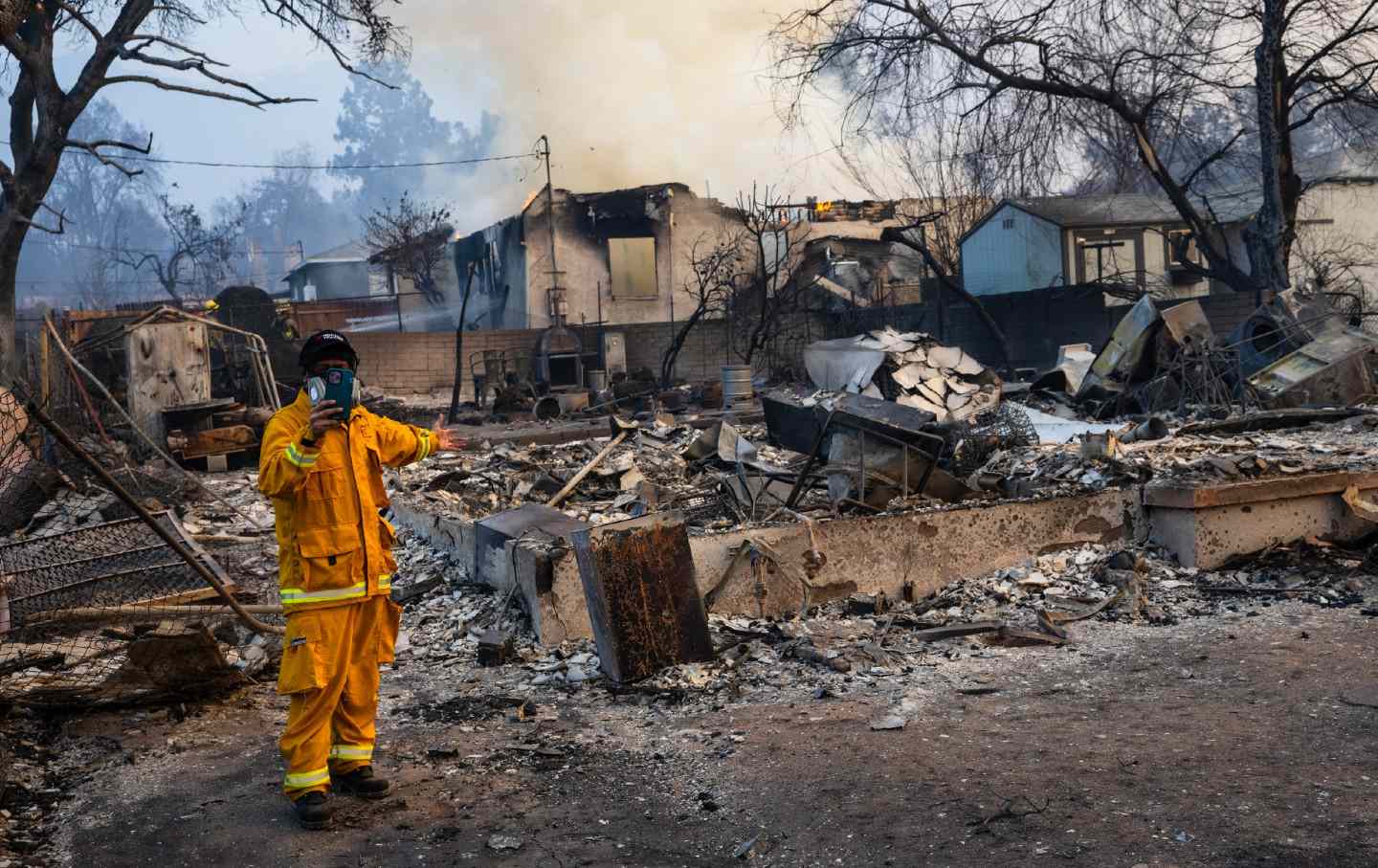
Even as the LA fires still burn, most journalism is not representing how the climate crisis is driving increasingly frequent and severe extreme weather.
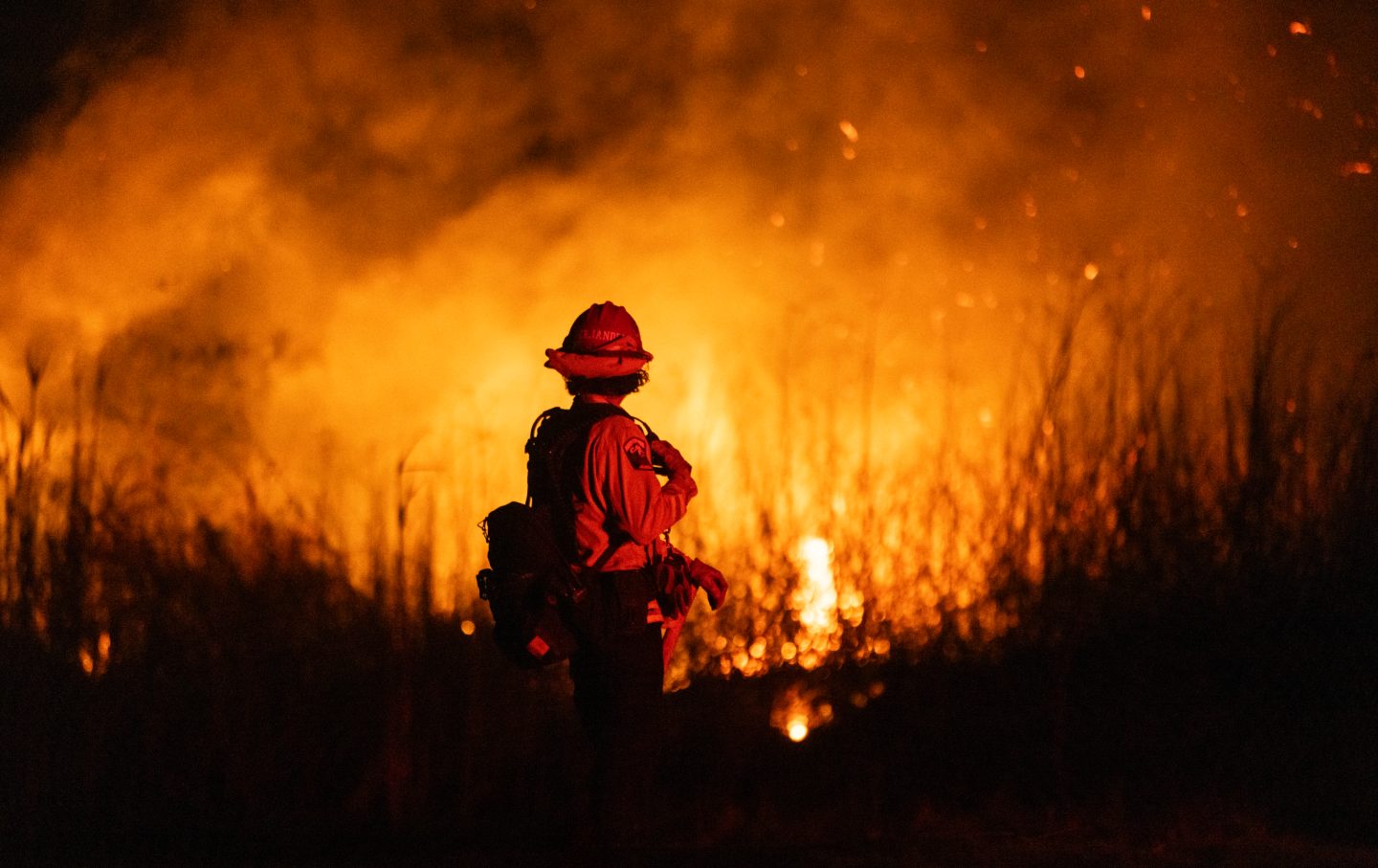
The LA disaster is a wake-up call: Our firefighting playbook was written for a world that no longer exists. We need a new approach, and we need it now.


